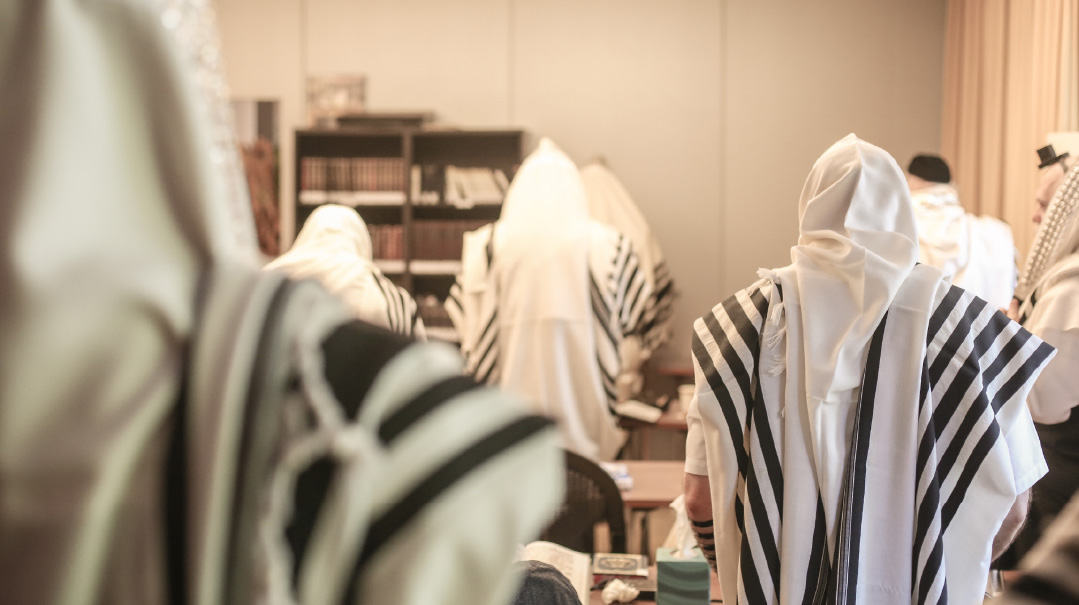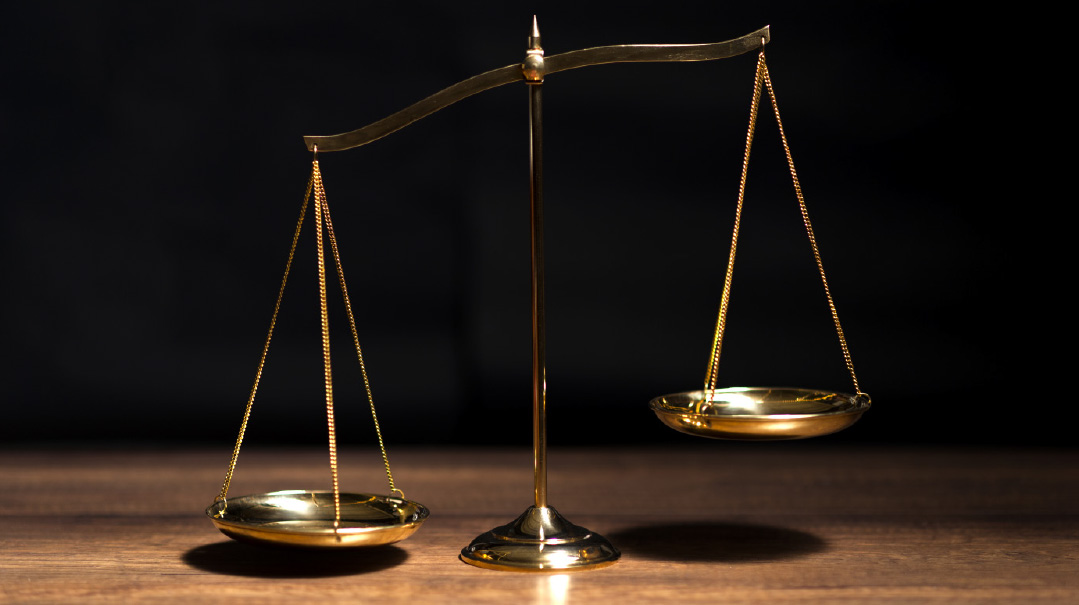Aligning with Ultimate Reality
| November 14, 2023Slabodka Rosh Yeshivah Rav Moshe Hillel Hirsch sounds a call for eternal protection

The war and the heartache and loss it has brought in its wake has led to an enormous hisorerus in Klal Yisrael. We all know we need to contribute and are determined to rise to the occasion. But sometimes we find ourselves groping for clarity in the fog of questions that have come to the fore. Last week, at the behest of talmidei chachamim in America, a shaliach went to the home of Rav Moshe Hillel Hirsch shlita, Rosh Yeshivah of the Slabodka Yeshivah and one of the venerated senior gedolei hador of our time, to discuss several pertinent questions.
Israel has deployed thousands of troops to Gaza where a raging battle is taking place. While we daven for the safety and success of the soldiers, how do we instill the recognition — in our children and in ourselves — that military efforts are but a form of hishtadlus, and ultimately it is Hashem Who will deliver us from this eis tzarah?
In 1948, Rav Isaac Sher, rosh yeshivah of Slabodka, spoke about the ongoing War of Independence. He said that while we stand before the Ribbono shel Olam, hoping for a yeshuah, we must instill in our hearts the recognition of what our true kochos are. He then enumerated three specific areas that we should focus on. These are bitachon, Torah, and tefillah. He also mentioned the importance of Bircas Kohanim, but that does not apply in chutz l’Aretz.
To answer your question, we must work on our bitachon. Bitachon does not mean that everything will turn out exactly as we want it. It means that we recognize that everything is in the hands of the Ribbono shel Olam and that He can change things k’heref ayin. And we must believe that, at the end of the day, all of it is for our good. Whether the end of the day means tomorrow or next year or in the Next World — somehow, it’s all for our good.
We say each day in Pesukei D’zimra, “lo bigvuras hasus yechpatz, lo b’shokei ha’ish yirtzeh.” Hashem does not want the might of the horse, nor does He desire the strength of man. Rather, says the pasuk, “rotzeh Hashem es yerei’av, es hameyachalim l’chasdo — Hashem wants those who fear Him and those who yearn for His chesed.”
This is the reality. Hashem runs the world, and all that happens comes from Him. We instill this in our hearts by constantly thinking about it and reminding ourselves of its truth. And we should openly discuss it with our children as well.
In a time like this, we all understand how shalom between Jews is absolutely critical. But how do we come to resolutions of disputes that carry so much hurt feelings? How can one simply forgive and forget someone who has truly and wrongfully caused him pain?
Generally, ill feelings are borne out of the perception that a certain individual inflicted harm upon you. This naturally leads to the desire to take revenge. But the problem lies in the perspective — it is simply incorrect.
When explaining the prohibition of lo sikom, the Sefer Hachinuch writes that one cannot take revenge against another Jew, as he must recognize that whatever happens to him is from Hashem. It is true that one who perpetuates pain will get punished for it, but that’s because he chose to be the shaliach for this task when he needn’t have. Hashem can find other ways to orchestrate punishment. But as far as we are concerned, we must view whatever we endure as coming directly from Hashem. It may be as a punishment, or it may be as a nisayon. But it all comes from Him.
One resolves disputes by taking this to heart and realizing that whatever suffering he endures comes from Hashem rather than the perceived perpetrator.
We are all striving to feel the pain of our brethren, as is our obligation. Should this include lowering the level of festiveness at our simchahs? Is there a difference between weddings and other simchahs in this regard?
There is definitely a difference between weddings and other simchahs. Weddings present the mitzvah of simchas chassan v’kallah and one cannot lessen that simchah even in an eis tzarah. I heard that on the night following the Chevron massacre, there was a wedding where the chassan was a talmid in the Chevron Yeshivah. The boys were instructed to attend and be as b’simchah as possible.
However, that is not to say that one should not tone down the extravaganza. Anything extra, anything that does not directly contribute to the chassan and kallah’s joy, should be toned down. And as far as other simchahs are concerned, such as a bris or bar mitzvah, yes, the level of festivity should be lessened to reflect the current tzarah.
There has been a great increase in tefillah throughout Klal Yisrael. In the world of yeshivos and kollelim, should the extra davening come at the cost of limud haTorah?
The piece from Rav Isaac Sher that I mentioned earlier lists tefillah as one of the primary focuses in such a time. But our approach to increased tefillah should be about the quality over the quantity. Our davening shouldn’t cut into our learning time — rather, the davening itself should be intensified. More specifically, we should work on tefillah so that it becomes an actual conversation with Hashem, as opposed to just reciting words.
It is told that a Jew far from Yiddishkeit once entered the Mirrer Yeshivah during Minchah. Later, they asked him what he saw. “A whole room of people praying,” he said, “and one old man talking to someone.”
That “one old man” was Rav Yeruchem Levovitz — and he was “talking” to Hashem. That’s what “increasing tefillah” means: turning tefillah into a conversation with Hashem where we can openly and directly ask of Him — save Klal Yisrael!
There has been a big movement to increase limud haTorah in Klal Yisrael. What does this mean practically? If one is already learning to the best of his abilities, how should he add to it? Should he be eating less? Sleeping less?
If one is already learning to the best of his capabilities, then “adding to learning” need not mean in a quantitative sense. Similarly to what we discussed regarding tefillah, one can “add” by intensifying his focus, thereby adding to the quality of his learning. This means striving to learn without any bittulim, without allowing yourself to get distracted.
What is the greatest zechus to be saved during these precarious times?
The Gemara tells us that Torah is “magna u’matzla — it protects and saves.” Limud haTorah is the greatest zechus for protection and salvation. But it’s important to mention the words of Reb Itzele Peterburger. The pesukim in Melachim tell us that the clothing that Dovid Hamelech wore would not warm him, and the Gemara tells us why. Once, when running away from Shaul Hamelech, Dovid had the opportunity to kill Shaul, but refrained from doing so. Instead, he cut a piece of Shaul’s clothing to let him know that he could have killed him. The Gemara explains that because Dovid demonstrated a lack of respect for clothing, he could not benefit from their warmth.
Says Rav Itzeleh, the same applies to Torah. Torah affords great protection but only to those who show it the proper respect. When we demonstrate true kevod haTorah, then we merit to realize the brachah of magna u’matzla.
I would add to this that we find that supporting Torah can be akin to learning it. The Chofetz Chaim said that those who support Torah will be able to “talk in learning” with great talmidei chachamim in Olam Haba. Therefore, it would seem that the brachah of magna u’matzla applies not only to those who learn Torah, but to those who support it as well.
May the zechus of the Torah truly protect us and lead to the final Geulah.
(Originally featured in Mishpacha, Issue 986)
Oops! We could not locate your form.






